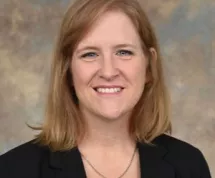Search
Explore content from JFS, ASB, the AAFS Newsfeed, and other content using the search bar or filters.
Loading...
Active Filters:
Membership News | General
Annual Dues October Drawing Winner
Section News | General
Nominating Committee Request
Section News | General
General Section Mentor/Mentee Call September 16
Section News | Anthropology
The Original Medicolegal DeathInvestigator Fall Training Course
Section News | General
Call for Nominations
Section News | General
AAFS 2026—General Section Reminders
Section News | General
Interview With Melissa Connor
Section News | General
General Section Awards
In Memoriam | General
In Memoriam—Professor Zug Standing Bear, PhD
Section News | General
Robert Gaffney Achievement Award Winner!
Section News | General
2025 General Section Reception and Moderators Needed
Section News | Anthropology
The Original Medicolegal Death Investigator Training Course
Section News | General
General Section Nominating Committee News
Section News | General
Q&A Interview With Peter Valentin, PhD

Section News | General
General Section Mentor Program
Membership News | General
Annual Dues October Drawing Winner
Section News | General
General Section Award Nominations
Section News | Anthropology
The Original Medicolegal Death Investigator Training Course
Section News | General
Interview With Joseph A. Finley, Jr., PhD
AAFS Webinars
Laboratory Safety and Health for Preventing Drug Exposure
Forensic scientists serve an integral role in law enforcement organizations throughout the country. Working in a laboratory poses both well-characterized and novel risks to the health of forensic scientists including those associated with seized drugs. This webinar will discuss how to recognize forensic laboratory hazards and how to prevent workplace injuries and illnesses.
Presenter: Jennie Cox, Certified Industrial Hygienist
Research Industrial Hygienist
NIOSH, CDC
